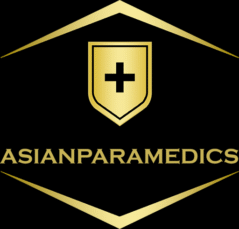Leukocytes (WBCs) MCQs
- Reference range for total leucocytic count in healthy adults is:
- 10 – 26 x 10^9/L
- 5 – 13 x 10^9/L
- 4 – 10 x 10^9/L ✅
- 2 – 6 x 10^9/L
- Reference range for neutrophils absolute count in healthy adult is:
- 1-4 x 10^9/L
- 2-7 x 10^9/L ✅
- 0.2-0.5 x 10^9/L
- 4-11 x 10^9/L
- The term that denotes total leucocytic count above 10 x 10^9/L is:
- Leucopenia
- Leukocytosis ✅
- Agranulocytosis
- Leukemoid reaction
- The term that denotes total leucocytic count below 4 x 10^9/L is:
- Leucopenia ✅
- Leucocytosis
- Agranulocytosis
- Leukemoid reaction
- Leucoerythroblastic reaction means:
- Presence of immature myeloid and erythroid cells in peripheral blood ✅
- Presence of immature myeloid and erythroid cells in bone marrow
- Presence of blasts in peripheral blood
- Presence of blasts in bone marrow
- A leucoerythroblastic reaction is:
- Left shift in peripheral blood
- Right shift in peripheral blood
- Both right and left shift in peripheral blood
- Left shift and nucleated RBCs in peripheral blood ✅
- None of the above
- Presence of immature myeloid and erythroid cells in peripheral blood is termed:
- Leukemoid reaction
- Hemolytic reaction
- Leucoerythroblastic reaction ✅
- Febrile reaction
- Drug induced reaction
- Neutrophilia is a feature of all of the following disorders except:
- Acute pyogenic infections
- Tissue damage or necrosis e.g. infarction, trauma
- Corticosteroid therapy
- Pregnancy
- Parasitic infections ✅
- Neutrophilia is a feature of all of the following disorders except:
- Malignancy of all types
- Myeloproliferative disorders e.g. polycythemia vera and myelofibrosis
- Metabolic disorders e.g. uremia, eclampsia, etc.
- Acute hemorrhage or hemolysis
- Antibiotic therapy ✅
- Neutrophilia is a feature of all of the following disorders except:
- Acute hemorrhage
- Acute pyogenic infections
- Cortisone therapy
- Infectious mononucleosis ✅
- Acute hemolysis
- Neutrophilia is a feature of all of the following disorders except:
- Bacterial infection
- Myocardial infarction
- Metastatic carcinoma
- Acute hemorrhage
- Chronic lymphocytic leukemia ✅
- Neutropenia is likely to occur in:
- Intake of anti-inflammatory drugs
- Viral infections e.g. hepatitis, influenza, HIV
- SLE
- Part of a general pancytopenia
- All of the above ✅
- Neutropenia is likely to occur in:
- Typhoid, brucella, tuberculosis
- Felty’s syndrome
- Intake of anti-bacterial drugs
- Megaloblastic anemia
- All of the above ✅
- Neutropenia is likely to occur in:
- Post-splenectomy
- Megaloblastic anemia ✅
- Burns
- Bacterial infections
- Acute hemorrhage
- Anticonvulsant therapy may cause:
- Neutrophilia
- Neutropenia ✅
- Lymphocytosis
- Lymphopenia
- None of the above

